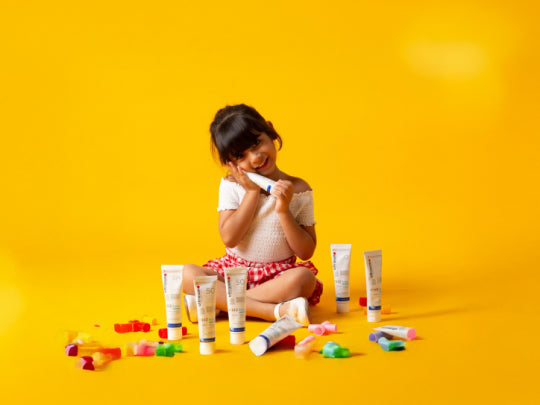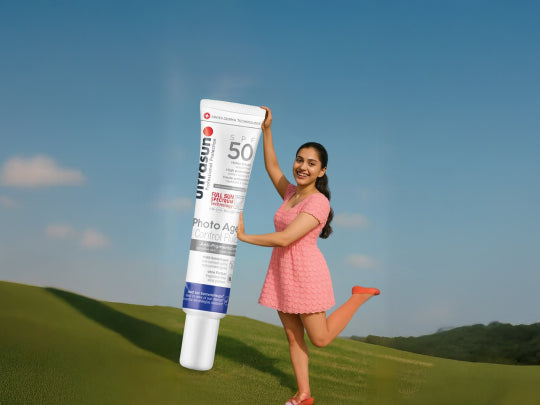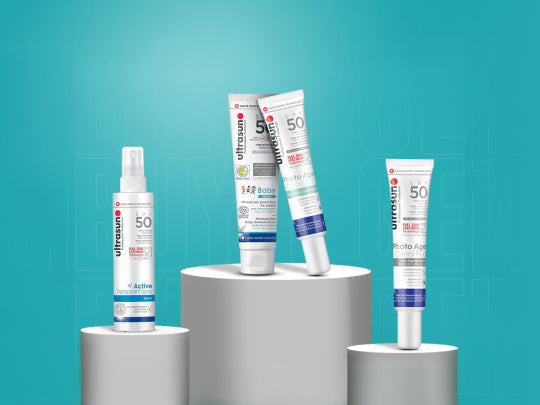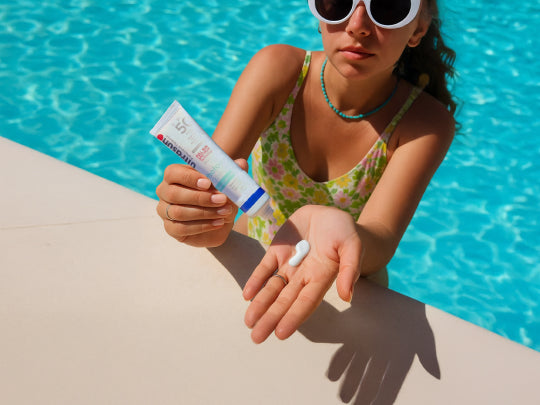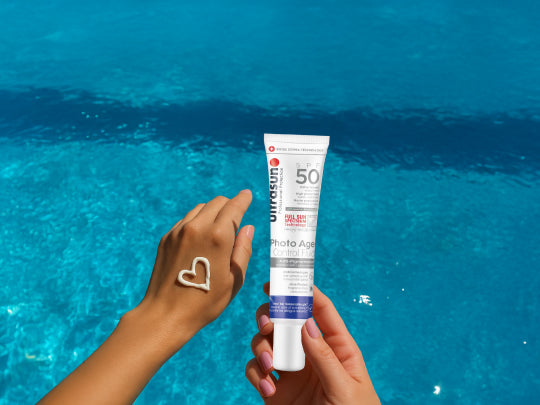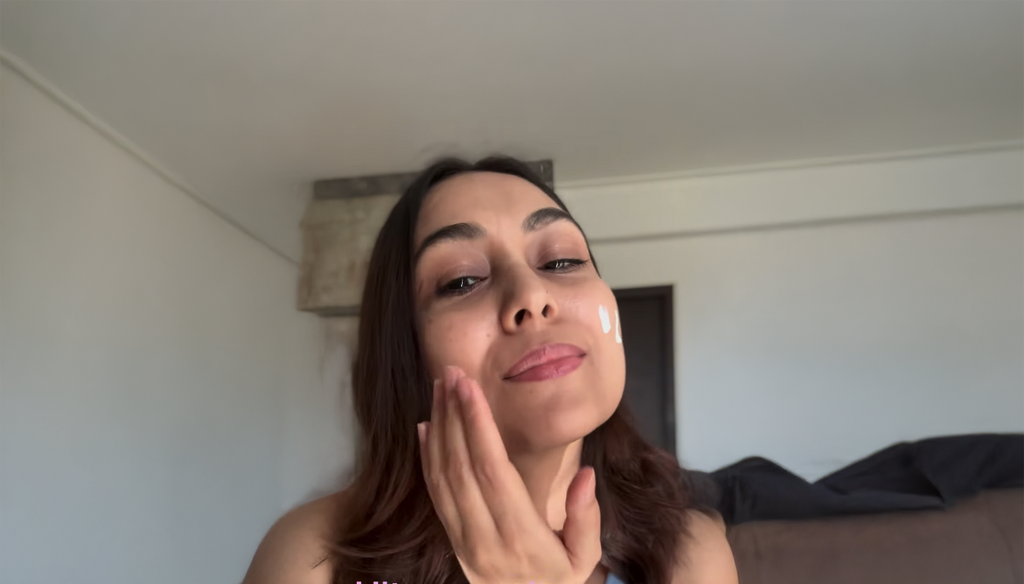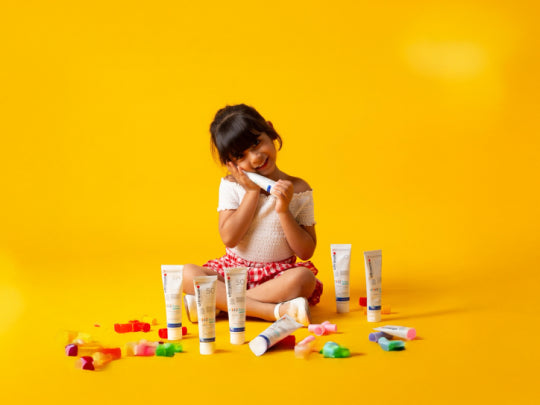Combination skin is a balancing act—some parts of your face are oily, others are dry or even flaky. The T-zone (forehead, nose, and chin) often shines by mid-day, while your cheeks may feel parched. It's like managing two different skin types on one canvas. And when it comes to layering products? One wrong step can either leave you feeling like an oil slick or with tight, uncomfortable skin. That's why Sunscreen for Combination Skin is important for our face and Body.
Why Sunscreen Is a Must-Have in Every Skincare Routine
Regardless of your skin type, sunscreen is a non-negotiable. For combination skin, though, finding the right formula is especially crucial. The wrong SPF can clog pores in oily areas or dehydrate dry zones. That’s why investing in the right sunscreen for combination skin makes all the difference—not just for protection, but for long-term skin balance and clarity.
Meet the Perfect Duo: Ultrasun Photo Age Control Fluid & Baby Mineral Sunscreen Combo
Let’s get real: one sunscreen doesn’t always work for every area of combination skin. That’s where the Ultrasun Photo Age Control Fluid & Baby Mineral Sunscreen combo comes in.
The Photo Age Control Fluid is lightweight, fast-absorbing, and ideal for oily or pigmented areas. It offers SPF 50+ protection while tackling dark spots with Hexylresorcinol.
The Baby Mineral Sunscreen, on the other hand, is 100% mineral-based, super gentle, and perfect for dry or sensitive areas of the face. Yes, adults can use it too—and it’s especially helpful around the eyes or on dry cheeks.
The Science of Layering: Why Order Matters
Layering isn’t about piling on products. It’s about applying them in the right sequence to let each one do its job. Think of your routine like painting a wall: you prep the surface, lay down primer, add color, and finish with a seal. In skincare, that “seal” is your sunscreen—it locks in moisture and guards against UV and pollution damage.
When to Use the Ultrasun Photo Age Control Fluid
This formula is your go-to SPF for daytime wear, especially under makeup. With anti-pigmentation ingredients, it not only protects but also corrects uneven tone over time. If you spend long hours outdoors or by a screen, this formula is ideal—it offers protection against UVA, UVB, and blue light (HEVL).
When the Baby Mineral Sunscreen Works Best (And Why Adults Can Use It Too)
Don’t let the word “baby” fool you. This 100% mineral sunscreen is fantastic for sensitive adult skin, especially around the eyes, or if you're prone to irritation or rosacea. It’s also your best bet post-treatment (like after exfoliation or facials) when skin needs extra soothing and barrier protection.
Makeup After SPF? Here’s What You Should Know
Wait about 2-3 minutes after applying sunscreen before you begin your makeup. This allows the sunscreen to form a stable, protective layer. Stick to non-oily primers or tinted moisturizers that won’t interfere with your SPF’s function.
Pro Tips: Mistakes to Avoid When Layering Sunscreen with Skincare
Don’t mix sunscreen with moisturizer—it weakens the formula.
Don’t apply too little. SPF needs a generous coat to work effectively.
Avoid over-layering heavy products under sunscreen. It may prevent proper absorption.
Instead, keep it clean, targeted, and consistent.
Final Thoughts: Balance Isn’t a Dream—It’s Just a Few Layers Away
Combination skin is complex, but it’s also manageable. With smart layering and the right products, like the Ultrasun Photo Age Control Fluid & Baby Mineral Sunscreen combo, you can build a routine that protects, hydrates, and balances every inch of your skin. Healthy skin doesn’t mean choosing between oily and dry. It means giving each zone exactly what it needs—layer by layer, day by day, with the help of Sunscreen for Combination Skin.
Ready to upgrade your sunscreen game? Explore the full combo here: Ultrasun India

